Utilize this comprehensive nursing care plan and management guide to provide effective care for patients with cystic fibrosis. Gain valuable insights on nursing assessment, interventions, goals, and nursing diagnosis specifically tailored for cystic fibrosis in this guide.
What is Cystic Fibrosis?
Cystic fibrosis (CF) is an autosomal recessive genetic disorder, with both parents carrying a gene for the disease, that is caused by a mutation in the gene for the protein cystic fibrosis transmembrane conductance regulator (CFTR) present in the mucus-secreting cells of the body, primarily affecting the respiratory, reproductive, and gastrointestinal tracts. The basic defect in CF is an exocrine gland dysfunction that includes increased viscosity of mucous gland secretions and a loss of electrolytes in sweat because of an abnormal chloride movement.
The hallmark manifestation of CF is chronic, progressive lung disease, resulting from the secretion of dehydrated mucus with airway obstruction, and malnutrition from pancreatic insufficiency. However, there is a wide range of disease varieties. Pulmonary symptoms can range from nearly asymptomatic disease with undetectable changes in the lung function to severe obstructive disease early in childhood, whereas gastrointestinal symptoms may range from mild constipation, normal liver function, and intermittent pancreatitis to severe loss of pancreatic function, malabsorption with subsequent malnutrition, CF-related diabetes, and end-stage liver diseases. The sweat glands and reproductive glands are also affected; almost all males diagnosed with CF are sterile because of the absence or impairment of vas deferens, whereas females have reduced fertility.
Newborn screening for cystic fibrosis is performed in all US states and the District of Columbia. The impact on the sweat gland gives rise to abnormally high chloride secretion; a simple analysis of sweat chloride content continues to be the gold standard for CF diagnosis.
Nursing Care Plans & Management
Nursing management is essential in the interdisciplinary care of adults with cystic fibrosis (CF). Nurses help patients manage pulmonary symptoms, prevent complications, and promote secretion removal through strategies like chest physiotherapy and breathing exercises. Patients are educated on reducing respiratory infection risks and recognizing early signs of infection. Adequate fluid and dietary intake are emphasized for secretion removal and nutrition. As CF is a lifelong disorder, patients adapt daily activities as the disease progresses. Palliative care and end-of-life discussions should be addressed when necessary, providing support to patients and families facing a shortened lifespan and uncertainty.
Nursing Problem Priorities
The following are the nursing priorities for patients with cystic fibrosis (CF):
- Managing airway obstruction and inflammation
- Managing decreased respiratory function
- Preventing chronic lung infections and complications
- Malabsorption and nutritional deficiencies
- Exacerbations and hospitalizations
- Education and knowledge gaps
- Unrealistic expectations and emotional challenges
- Family dynamics and support exhaustion
Nursing Assessment
Cystic fibrosis (CF) is characterized by pulmonary symptoms such as a productive cough, wheezing, hyperinflation on chest x-ray, and obstructive airway disease. Chronic inflammation and infection result from impaired mucus clearance, with early colonization by S. aureus and H. influenzae, and later P. aeruginosa. CF also presents with upper respiratory symptoms like sinusitis and nasal polyps. Nonpulmonary manifestations include gastrointestinal issues, CF-related diabetes, and genitourinary problems affecting fertility.
Assess for the following subjective and objective data:
- Cough
- Wheezing
- Dyspnea (shortness of breath)
- Hypercapnia (high carbon dioxide levels in the blood)
- Hypoxemia (low oxygen levels in the blood)
- Pale, cyanotic skin color
- Restlessness
- Tachypnea (rapid breathing)
- Tachycardia (rapid heartbeat)
- Abnormal chest X-ray findings
- Decline in pulmonary function testing (spirometry)
- Chest pain
- Crackles and rhonchi (abnormal lung sounds)
- Fatigue
- Labored breathing
- Reduced breath sounds
- Abnormal eating behaviors
- Gastrointestinal tract abnormalities (recurring pancreatitis, biliary cirrhosis)
Assess for factors related to the cause of cystic fibrosis (CF):
- Airway obstruction by nasal obstruction
- Airway and alveoli inflammation
- Bronchiectasis with decreased surface area for gas exchange and loss of lung function
- Infection with lung consolidation, alveolar collapse
- Increased mucopurulent production and mucous plugging in response to new or increased airway bacterial growth.
- Growth plume of known colonized CF airway pathogens
- Invading viral organism
- New acquisition of common cystic fibrosis airway pathogens
- Chronic malabsorption
- Increased caloric needs
- Poor nutritional status resulting from anorexia
- First exacerbation/hospitalization experience
- Ineffective or incomplete education in past
- Rapidly expanding clinical knowledge base with new interventions available
- Unrealistic expectations
- Family disorganization and role changes
- Prolonged disease that exhausts the supportive capacity of family members
Nursing Diagnosis
Following a thorough assessment, a nursing diagnosis is formulated to specifically address the challenges associated with cystic fibrosis based on the nurse’s clinical judgement and understanding of the patient’s unique health condition. While nursing diagnoses serve as a framework for organizing care, their usefulness may vary in different clinical situations. In real-life clinical settings, it is important to note that the use of specific nursing diagnostic labels may not be as prominent or commonly utilized as other components of the care plan. It is ultimately the nurse’s clinical expertise and judgment that shape the care plan to meet the unique needs of each patient, prioritizing their health concerns and priorities.
Nursing Goals
Goals and expected outcomes may include:
- The client will maintain optimal gas exchange as evidenced by oxygen saturation of 90% or greater, arterial blood gases (ABGs) within the client’s usual range, relaxed breathing, baseline heart rate, alert response mentation, and no further deterioration in the level of consciousness.
- The client will demonstrate comprehension of causative factors and appropriate interventions, actively engaging in the treatment regimen based on their abilities and individual circumstances.
- The client will be proficient in using effective airway clearance therapies to clear secretions on a daily basis, as evidenced by decreased work of breathing and improved pulmonary function.
- The client will maintain a clear, open airway as evidenced by normal breath sounds, normal rate and depth of respirations, and an airway free of secretions, with an effective cough.
- The client will experience improvement in infection and suppression of bacterial growth, as evidenced by a decrease in a cough, mucus production to baseline, normothermia, and normal white blood cell count.
Nursing Interventions and Actions
Nursing management for adults with CF involves addressing pulmonary symptoms, promoting secretion removal, and providing end-of-life support. This includes chest physiotherapy, breathing exercises, and ensuring adequate fluid and dietary intake. Regular reassessment and support for patients and families are essential. Therapeutic interventions and nursing actions for patients with cystic fibrosis (CF) may include:
1. Maintaining Patent Airways & Improving Gas Exchange
Maintaining patent airways and improving gas exchange are key objectives in the management of patients with cystic fibrosis (CF). CF is a genetic condition characterized by the production of thick mucus that can obstruct the airways and impair breathing. Effective airway clearance techniques, such as chest physiotherapy and inhalation therapies, are employed to help mobilize and remove mucus, ensuring proper airflow. Additionally, interventions like bronchodilators and mucolytic agents may be utilized to open the airways and improve gas exchange. By prioritizing these strategies, healthcare professionals aim to optimize respiratory function and enhance the overall well-being of individuals with CF.
1. Monitor vital signs, especially respiratory and heart rates, for any changes.
There will be an increase in the respiratory and heart rate by way of compensation for early hypoxia, as well as chest retractions, increased work of breathing, nasal flaring, and use of accessory muscles of respiration. These are signs of respiratory distress necessitating prompt intervention or treatment.
2. Assess cough for effectiveness.
Habitual cough suppression is common in clients with cystic fibrosis; effective mucus-clearing is important for adequate airway clearance. Cough is part of the life for clients with CF and is both a symptom and a natural defense mechanism for clearing the airways. However, excessive cough can also lead to airway collapse with insufficient clearance of the mucus (Taheri et al., 2022).
3. Assess for changes in respiratory status such as cyanosis, pallor, changes in the level of consciousness, labored breathing, and tachypnea.
The client will adapt their breathing pattern over time to facilitate gas exchange. Abnormalities may indicate respiratory compromise, hypercarbia, or hypoxia. A child with cystic fibrosis often has a barrel chest (anterior-posterior diameter approximates transverse diameter). Clubbing of nail beds might also be present, a compensatory response indicating a chronic lack of oxygen.
4. Assess sputum for color, amount, and consistency.
A decreasing amount and frequency of sputum production, lighter color, and thinner consistency of sputum indicate improvement in exacerbation. Scant amounts or streaking of blood in the sputum can occur from airway inflammation; however, major hemoptysis can occur and is a life-threatening emergency.
5. Assess the chest wall for even chest expansion.
Unequal chest expansion can indicate a pneumothorax – a complication of cystic fibrosis. Eventually, the client’s chest assumes a barrel shape, with an increased diameter across the front and back.
6. Monitor transcutaneous carbon dioxide as ordered.
Chronic hypercarbia can be present in clients with moderate to severe cystic fibrosis lung disease; increasing levels can indicate the progression of acute infection and pending respiratory failure. Like hypoxemia, chronic hypercarbia is also associated with mortality in CF and can be detected on screening, and its presence in CF is cited as an indication for a lung transplant referral. It is recommended that individuals with advanced cystic fibrosis lung disease (ACFLD) undergo annual screening for hypercarbia using venous blood gas (Kapnadak et al., 2020).
7. Monitor arterial blood gases and oxygen saturation as indicated.
Increasing PaCO2 and decreasing PaO2 are signs of respiratory failure. Severe hypoxemia and hypercarbia can lead to hypotension, dysrhythmias, and failing respiratory effort. In accordance with US Center for Medicare and Medicaid Services and most third-party payer requirements, if PaCO2 is >56 mm Hg on venous blood gas, a confirmatory arterial blood gas should be obtained (Kapnadak et al., 2020).
8. Auscultate for breath sounds and percuss for chest resonance.
Auscultation may reveal a variety of adventitious breath sounds. Fine or coarse crackles and scattered or localized wheezing might be present. With progressive obstructive pulmonary involvement, breath sounds might be diminished. Percussion over the lung fields usually yields hyper resonance due to air trapping.
9. Assess the client’s comfort level with and adherence to recommended airway clearance therapy (ACT).
Client satisfaction and proficiency with the selected ACT regimen are essential for adherence. Several participants in a study stated that they avoid exercise or chest physical therapy because the activities seemed to increase their cough. Because these personal strategies lead to poor adherence to the treatment, they can cause serious consequences (Taheri et al., 2022).
10. Assess for barriers to ongoing airway clearance.
The identification of barriers to ACT can guide interventions to improve adherence. The similarity of the main manifestation of COVID-19 and CF has further isolated clients and created more psychological burdens for them and their families, according to a study. The study also found that adherence to chest physical therapy and nebulizer treatments were the most challenging aspects of self-care for clients and their parents. The clients also missed treatments due to interruptions in daily life, waking up late, time pressures, or discomfort about taking medications in front of others (Taheri et al., 2022).
11. Assess the client’s mental status and general appearance.
Restlessness, irritability, confusion, and somnolence may reflect hypoxemia or decreased cerebral oxygenation. The client may become irritable and tired easily. There is a gradual change in physical appearance.
12. Monitor pulmonary function testing.
Improvement in spirometry signifies improved airflow and aeration, effective airway clearance, and treatment of infection. In the early stages, forced expiratory volume in one second (FEV1) may be normal, and forced expiratory flow (FEF) after 25 to 75% of vital capacity has been expelled is reduced, suggesting small airway involvement (Sharma & Haver, 2022).
12. Provide the opportunity for exercise and physical therapy.
Exercise supports the goal of airway clearance by loosening the mucus and facilitating effective coughing. It also improves overall physical conditioning and recovery. Regular exercise increases physical fitness in clients with cystic fibrosis. Upper-body exercises, such as canoe paddling, may increase respiratory muscle endurance (Sharma & Haver, 2022).
13. Instruct the client on breathing techniques.
The use of breathing techniques with associated devices is extremely important for airway secretion clearance in the treatment of CF. The use of active breathing exercises to enhance airway mucus clearance strengthens lung capacity over time. Client education regarding breathing technique demonstrations associated with the use of devices to further enhance mucus clearance is essential for establishing daily airway clearance regimens that educated CF clients must use (Chaudary & Balasa, 2021).
14. Provide adequate rest between activities during the day, with minimal nighttime interruption in sleep.
Activity should be paced appropriately to avoid increase in oxygen demand and avoid fatigue. Individuals diagnosed with cystic fibrosis may have sleep problems due to abnormalities with the airway, as well as impaired gas exchange. CF has been shown to predispose individuals to hypoxemia, or low levels of oxygen in the blood, which is associated with sleep disruption and daytime impairment (Editorial Team, Cystic-Fibrosis.com, 2019).
15. Place the client in a semi-Fowler’s position or elevate the head of the bed.
The semi-Fowler position promotes lung expansion and decreases airway collapse, dyspnea, and breathwork through gravity. The client’s head of the bed may be elevated to promote maximal inspiration and enhance the expectoration of secretions to improve ventilation.
16. Encourage a frequent and effective cough- particularly around airway clearance therapy (ACT).
Habitual cough suppression results in the retention of mucus; clients should be encouraged to actively and intentionally use effective coughing to clear airway mucus. Airway clearance techniques have been used and have required client participation and changes in body posture to enhance clearance and to produce effective coughs that ultimately help recruit poorly ventilated lung zones (Chaudary & Balasa, 2021).
17. Use play therapy in teaching a younger child to do coughing and breathing exercises.
Children younger than seven years cannot voluntarily produce an effective cough. Coughing and deep-breathing exercises help expand the lungs and mobilize secretion. For example, when using a spirometer, the nurse may instruct the child to “blow up” the fingers of a clean glove.
18. Assist in chest physiotherapy as appropriate.
Chest physiotherapy is often used as an adjunct therapy in respiratory illnesses, but for children with CF, it is a critical intervention. Chest physiotherapy involves percussion, vibration, and postural drainage, and either it or another bronchial hygiene therapy must be performed several times a day to assist with the mobilization of secretions.
19. Administer hypertonic saline solution via nebulization.
Hypertonic saline inhalation has been proposed as a therapy to increase the hydration of airway surface liquid in clients diagnosed with CF. Hypertonic saline was not associated with worsening bacterial infections or inflammation. The Pulmonary Therapies Committee of the Cystic Fibrosis Foundation recommends long-term use of hypertonic saline for clients with CF aged six years or older to improve lung function and reduce the number of exacerbations (Sharma & Haver, 2022).
20. Administer oxygen therapy as indicated. Avoid giving high oxygen concentrations to clients with chronic carbon dioxide retention.
Supplemental oxygen maintains adequate oxygenation, decreases work of breathing and calorie expenditure, relieves dyspnea, and increases the level of comfort. Maintaining an oxygen saturation greater than 90% is the goal. Both nocturnal and exertional supplemental oxygen in CF improves oxygenation with the potential for slight worsening of hypercarbia. Oxygen use in advanced cystic fibrosis lung disease (ACFLD) also improves exercise capacity and reduces absenteeism from school or work (Kapnadak et al., 2020).
21. Collaborate with respiratory care personnel in the monitoring and administration of noninvasive ventilation as indicated.
Bilevel-positive airway pressure is noninvasive ventilation indicated for clients with severe lung disease and a superimposed acute illness or for assistance with nighttime ventilatory needs. Nocturnal NIV for hypercarbia in CF was shown in one high-quality randomized crossover trial to improve partial pressure of carbon dioxide, dyspnea, and exercise tolerance. Other series similarly demonstrate improvements in symptoms, lung function, or utility in bridging to lung transplant (Kapnadak et al., 2020).
22. Promote participation in a pulmonary rehabilitation program.
Multiple studies have evaluated exercise programs at home and in healthcare settings in individuals with CF including advanced cystic fibrosis lung disease (ACFLD). Both strength and aerobic training improve exercise capacity and quality of life, and some studies demonstrate small improvements or slowing in the rate of decline in lung function. Enrollment in pulmonary rehabilitation programs may also be beneficial in preparation for lung transplantation and is required by some transplant programs (Kapnadak et al., 2020).
23. Prepare for transfer to the intensive care unit if indicated.
Survival in CF after an ICU admission has improved compared to previous decades. Survival to hospital discharge is reported as high as 55% when a lung transplant is an option and 10 to 55% when a transplant is not an option. The CF Foundation recommends that individuals with advanced cystic fibrosis lung disease (ACFLD) and acute respiratory failure be considered eligible for ICU management regardless of transplant status if congruent with the goals of care (Kapnadak et al., 2020).
24. Administer inhaled hypertonic saline as indicated.
A study about the effects of hypertonic saline in clients with CF reported that clients receiving 7% hypertonic saline (4 mL via nebulizer bid) had improved lung function and fewer pulmonary exacerbations compared with clients receiving normal saline in a similar fashion.
25. Administer humidified oxygen as ordered.
Humidification helps to thin and loosen secretions. In chronic obstructive respiratory diseases, the respiratory center in the brain becomes tolerant of low oxygen saturation in the blood. Administering high concentrations of oxygen to a client with chronic lung disease can lead to carbon dioxide narcosis.
26. Administer intermittent aerosol therapy as appropriate.
Intermittent aerosol therapy is administered to provide medication to the lower respiratory tract and to promote the evacuation of secretions. Recombinant human deoxyribonuclease dornase alfa in a single daily aerosol dose is effective in decreasing the thickness of secretions, thereby improving pulmonary function.
27. Administer medication as prescribed.
See Pharmacologic Management
28. Collaborate with the client and staff to determine the preferred ACT, such as autogenic or postural drainage, handheld oscillating devices, mechanical chest wall percussion (vest), or traditional chest physiotherapy.
The Cystic Fibrosis Transmembrane Conductance Regulator defect causes mucus to become dehydrated. Secretions in cystic fibrosis are generally thick, sticky, and more difficult to clear. Frequent airway clearance is a mainstay in the treatment of acute exacerbations, as well as an integral part of health maintenance in cystic fibrosis. Individualized care and client choice in therapy will affect adherence and the effectiveness of treatment. A variety of supportive devices is available. A respiratory therapist can be helpful in these selections (Chaudary & Balasa, 2021).
29. Collaborate with the client and staff to ensure that the schedule for the therapy is amenable to all and does not interfere with meals, rest times, or medications.
ACT is time-consuming and must be part of a balanced treatment plan. ACT should not be done immediately after meals, nor should it interfere with rest or other required therapies such as medication and physical therapy; it, therefore, requires careful scheduling.
30. Assist in the preparation of lung transplantation, as appropriate.
Although outcomes have improved, advanced cystic fibrosis lung disease (ACFLD) is associated with significant morbidity and reduced quality of life and remains the most common cause of death in CF. Lung transplant outcomes have also improved, and multiple cohort studies demonstrate improved quality of life and survival with transplant for individuals with ACFLD. The benefits of lung transplants are likely most pronounced in those who are severely impaired and have additional predictors of mortality (Kapnadak et al., 2020).
2. Administering Medications and Pharmacological Support
Medications are essential in managing cystic fibrosis (CF), addressing digestion, airway function, and infections. From pancreatic enzyme replacement therapy to bronchodilators, mucolytics, CFTR modulators, and antibiotics, these tailored medications aim to optimize health outcomes and improve the quality of life for CF patients.
1. Pancreatic Enzyme Replacement Therapy (PERT).
These medications, such as pancrelipase, help individuals with cystic fibrosis who have pancreatic insufficiency by providing the necessary digestive enzymes to aid in the breakdown and absorption of fats, proteins, and carbohydrates.
2. Bronchodilators.
Medications like albuterol or salbutamol are used to relax the smooth muscles in the airways, helping to open them up and improve airflow in the lungs. They are typically administered through inhalers or nebulizers to alleviate symptoms of airway constriction.
3. Mucolytics.
Mucolytic agents, such as dornase alfa, work by thinning the thick mucus that accumulates in the airways of individuals with cystic fibrosis. By reducing the viscosity of the mucus, these medications help improve airway clearance and promote better lung function.
4. Inhaled Antibiotics.
Medications like tobramycin or colistimethate sodium are used to deliver antibiotics directly to the lungs through inhalation. They target and control the growth of bacteria commonly found in the respiratory tract of individuals with cystic fibrosis, helping to manage chronic lung infections.
5. CFTR Modulators.
These medications, such as ivacaftor, lumacaftor, or tezacaftor, are designed to target specific defects in the CFTR protein responsible for cystic fibrosis. They help improve the function of the CFTR protein, which regulates the movement of salt and water across cell membranes, thereby addressing the underlying cause of the disease.
6. Anti-inflammatory Medications.
In some cases, corticosteroids may be prescribed to reduce inflammation in the airways and help control symptoms in individuals with cystic fibrosis. They can be administered orally or through inhalation.
7. Proton Pump Inhibitors (PPIs).
PPIs, such as omeprazole or lansoprazole, are used to reduce stomach acid production in individuals with cystic fibrosis who experience gastroesophageal reflux disease (GERD). By decreasing acid reflux, these medications can help alleviate associated symptoms and protect the esophagus from damage.
3. Monitoring Diagnostic Procedures and Laboratory Studies
Regular monitoring of diagnostic procedures and laboratory studies enables nurses to make informed treatment decisions, adjust therapies as needed, and intervene promptly in case of exacerbations or complications.
1. Sweat Test.
The sweat test is a commonly used diagnostic procedure for cystic fibrosis. It measures the amount of chloride and sodium in a person’s sweat, as individuals with CF tend to have higher levels of these electrolytes. Elevated sweat chloride levels are indicative of CF.
2. Genetic Testing.
Genetic testing can confirm the presence of cystic fibrosis by identifying specific mutations in the CFTR gene. This test can help diagnose CF in newborns through newborn screening programs or in individuals suspected of having the condition.
3. Pulmonary Function Tests.
Pulmonary function tests, such as spirometry and lung volume measurements, are performed to assess lung function in individuals with CF. These tests measure parameters such as forced expiratory volume in one second (FEV1) and forced vital capacity (FVC) to evaluate airflow limitation and overall lung capacity.
4. Chest X-ray.
A chest X-ray may be done to assess the condition of the lungs and identify any structural abnormalities, such as lung infections, bronchiectasis, or lung damage, that are commonly associated with cystic fibrosis.
5. Sputum Culture.
Sputum culture involves analyzing a sample of mucus coughed up from the lungs to identify the presence of bacteria or fungi. This test helps guide antibiotic treatment by determining the specific pathogens causing respiratory infections in individuals with CF.
6. Blood Tests.
Blood tests are performed to measure various parameters, including liver function, pancreatic enzymes, electrolyte levels, and markers of inflammation. These tests help monitor the overall health and identify any associated complications in individuals with cystic fibrosis.
7. Nasal Potential Difference Measurement.
Nasal potential difference measurement is a specialized test that measures the electrical activity across the nasal lining. It helps evaluate the function of the CFTR protein and can be used to confirm the diagnosis of cystic fibrosis in certain cases.
4. Promoting Infection Control & Management
The thick and sticky secretions in cystic fibrosis obstruct the airways, leading to bronchiectasis, atelectasis, and hyperinflation. Stagnant mucus creates a breeding ground for bacteria. Collaboration among healthcare professionals, patients, and families is vital for infection control. By implementing effective management strategies and infection control measures, nurses aim to minimize respiratory infections in individuals with cystic fibrosis.
1. Assess for the general signs and symptoms of infection such as fever, cough, malaise, increased sputum, weight loss, tachypnea, and tachycardia.
Pulmonary infections are associated with general symptoms of infection, along with an increase in respiratory rate and heart rate. The client may present with a chronic or recurrent cough, which can be dry and hacking at the beginning and can produce mucoid (early) and purulent (later) sputum. Prolonged symptoms of bronchiolitis can occur in infants (Sharma & Haver, 2022).
2. Obtain a sputum specimen for culture and sensitivity as ordered.
The acquisition of new pathogens is often associated with CF pulmonary exacerbation. Common CF pathogens include Staphylococcus aureus, Staphylococcus aureus, Pseudomonas aeruginosa, Methicillin-resistant Staphylococcus aureus (MRSA), and Achromobacter xylosoxidans, Burkholderia cepacia, and Stenotrophomonas maltophilia. Airway culture and sensitivities guide infection control measures, as well as antimicrobial selection.
3. Monitor oxygen saturation.
Oxygen requirements can increase during acute respiratory infections or in response to fever. The noninvasive measurement of oxygen saturation by pulse oximetry provides for the early recognition of impaired oxygen saturation.
4. Monitor the client’s immunoglobulin E (IgE) as ordered.
CF pulmonary exacerbations can result from allergic bronchopulmonary aspergillosis (ABPA), an allergic response to Aspergillus in the airways. IgE will be significantly elevated.
5. Monitor pending culture and sensitivity results for drug resistance.
Drug resistance may necessitate a change in antibiotics. A new organism may alter infection control precautions. Colonization and infection with methicillin-resistant Staphylococcus aureus (MRSA) have emerged as critical factors in lung infection and pulmonary function in clients with CF. The client may require multiple antibiotic regimens.
6. Monitor viral studies as ordered.
Pulmonary exacerbations can occur in response to or concurrently with a viral illness. Clients diagnosed with CF experience frequent respiratory viral infections with the respiratory syncytial virus (RSV), rhinovirus, influenza, parainfluenza, and adenovirus, with RSV and influenza infection linked to the greatest decreases in lung function (Kiedrowski & Bomberger, 2018).
7. Monitor white blood cell count as ordered.
WBC can be elevated in response to pulmonary exacerbation or infection with a new organism. The altered host immune status following viral infection reduces antibacterial effector functions, like phagocyte recruitment, antimicrobial peptide production, and protective adaptive immune responses, increasing susceptibility to bacterial infections (Kiedrowski & Bomberger, 2018).
8. Monitor the client’s antibiotic levels as ordered.
Inadequate dosing can result in resistance and/or poor therapeutic response. Toxicity can result in poor outcomes or adverse events. Antibiotic treatment may vary from a short course of one antibiotic agent to a continuous course with multiple antibiotics administered via various routes, including oral, intravenous, or inhalation (Sharma & Haver, 2022).
9. Enforce strict practicing of hand hygiene and asepsis to all healthcare personnel, caregivers, and client.
The client with CF has low resistance, especially to respiratory infections. Good handwashing techniques should be practiced by all; teach the client and the family the importance of this first line of defense. Practice and teach good hygiene habits. Carefully follow medical asepsis when caring for the client and the equipment.
10. Ensure that clients with CF are not cohorted.
The cohorting of clients with CF is not recommended based on published CF Infection Control Consensus Guidelines. The client is isolated from clients and personnel who may harbor infections. The period of hospitalization is kept brief, if possible, to avoid cross infections.
11. Instruct the client about the proper infectious waste disposal, especially of secretions.
The client may find expectoration offensive and attempt to limit or avoid it. However, it is essential that sputum be disposed of in a safe manner to avoid possible contamination of other caregivers or healthcare personnel.
12. Administer antipyretics as ordered, avoiding nonsteroidal anti-inflammatory drugs (NSAIDs) in clients receiving IV aminoglycosides.
Antipyretics maintain normothermia and reduce metabolic needs. Aminoglycosides and NSAIDs in combination can cause renal toxicity. Anti-inflammatory medications such as ibuprofen are becoming more important in the treatment of CF, but careful monitoring for adverse effects such as gastrointestinal bleeding is essential.
13. Administer IV antibiotics as ordered in a timely manner.
Benchmark institutions set the standard for the first dose of IV antibiotics within four hours of admission. A Cochrane review included four studies comparing once-daily dosing of aminoglycosides in the treatment of acute pulmonary exacerbation with a thrice-daily dose. There were no significant differences in lung function, weight for height, and body mass index. The creatinine changes significantly favored once-daily treatment in children but not in adults. These findings support the recent trend to use once-daily IV aminoglycosides (Sharma & Haver, 2022).
14. Consider an audiology evaluation in clients who have a history of frequent IV aminoglycoside use.
Ototoxicity is a common adverse effect of aminoglycoside use. Serial audiometry may be considered to prevent irreversible hearing loss. Aminoglycoside-induced ototoxicity has been reported to occur in 2 out of 45% of adults. The ototoxicity can be vestibular and/or cochlear and is typically dose-dependent (Block & Blanchard, 2022).
15. Institute the appropriate infection control precautions.
Many CF pathogens require clients to be in contact isolation based on the Centers for Disease Control and Prevention (CDC) and Cystic Fibrosis Foundation (CFF) Consensus Guidelines. Clients with CF should observe the “6-foot rule”. This means that people with CF should remain separated from each other by at least six feet of distance in all settings. Those who live with clients with CF should also remain six feet from anyone with any type of respiratory infection. Clients with CF also are not allowed to be in communal areas, such as playrooms or the gym, at the same time (Johns Hopkins All Children’s Hospital, 2022).
16. Administer routine vaccinations as indicated.
Routine vaccinations are indicated in clients with CF, including seasonal influenza vaccination. A recent attempt by a Cochrane review to study the palivizumab vaccine for the prevention of respiratory syncytial virus infection in clients with cystic fibrosis identified one randomized control trial, which reported no increase in the adverse events in the treatment versus placebo groups and that the vaccine made no difference (Sharma & Haver, 2022).
5. Promoting Optimal Nutrition
Adequate nutrition is essential for individuals with CF as it supports overall health, enhances lung function, and improves the effectiveness of treatments. The management of CF-related nutrition typically involves a multidisciplinary approach that includes dietitians, physicians, and other healthcare professionals. Individualized nutritional plans are developed based on the unique needs of each patient, taking into account factors such as age, disease severity, growth patterns, and metabolic demands.
1. Assess the abdomen for bloating, fullness, bowel sounds, or palpable stool mass.
Undertreated malabsorption is common in cystic fibrosis; symptoms may be normalized by clients and families; adjustments in pancreatic enzyme supplementation are warranted with the signs or symptoms of malabsorption. Abnormal intestinal motility may also contribute to meconium ileus development. Abdominal distention may be severe enough to cause respiratory distress (Sharma & Haver, 2022).
2. Monitor stool patterns for frequency, odor, consistency, and the presence of oil or grease.
Infants and children may present with increased frequency of stools, which suggests malabsorption (fat or oil drops in stools), failure to thrive, intussusception, or rectal prolapse. Malabsorption results in steatorrhea, characterized by frequent, poorly formed, large, bulky, foul-smelling, greasy stools that float in water. Cloth diapers, if used, are difficult to clean (Sharma & Haver, 2022).
3. Assess the skin’s color, integrity, and turgor.
Malnutrition can be associated with an alteration in skin integrity. CF-related liver disease can result in jaundice. Loss of electrolytes (sodium and chloride) in the sweat causes a “salty” skin surface. Loss of electrolytes via the skin predisposes the client to electrolyte imbalances during hot weather.
4. Monitor for changes in weight and appetite.
Increasing trends in weight and appetite accompany the resolution of pulmonary exacerbations. The combination of increased energy intake demand of chronic disease, difficulty sustaining energy uptake because of malabsorption, and anorexia leads to poor weight gain (Sharma & Haver, 2022).
5. Monitor for excessive thirst, urination, and hunger. Obtain bedside blood glucose readings as ordered.
CF-related diabetes occurs in up to 30% of adolescents and adults with CF; glucose intolerance can be present intermittently with pulmonary exacerbations. Abnormal chloride channel function results in thick viscous secretions that give rise to damage to the exocrine pancreas. Progressive fibrosis and fatty infiltration ensue and destroy islet architecture. A significantly reduced percentage of insulin-producing cells within islets was identified in cystic fibrosis-related diabetes (CFRD). This B-cell-specific destruction characterizes type 1 diabetes mellitus (Kelly & Moran, 2013).
6. Monitor serum chemistry as ordered.
Hypoalbuminemia, an elevation in liver enzymes, hyperglycemia, and alterations in electrolyte balances can all represent complications in cystic fibrosis. Albumin is the major protein in the meconium of infants with meconium ileus and is present five to ten times higher than normal. In addition, there is a significant increase in the liver’s production of intraluminal glutamyl transpeptidase (GGTP) and 5 nucleotidase, which enters the meconium and promotes meconium ileus (Sharma & Haver, 2022).
7. Determine the client’s normal feeding pattern, dietary likes and dislikes, and activity level.
Identifying the client’s preferences and activity level will aid in the plan of care with regard to feeding the client. In children, because of various physical activities and eating habits, assessment and modification of energy requirements are based on growth and weight gain (Sharma & Haver, 2022).
8. Observe for generalized muscle wasting and loss of subcutaneous fat.
Changes occurring in the pancreas result from obstruction by thickened secretions that block the flow of pancreatic digestive enzymes. As a result food, particularly fats and proteins, are not properly digested and used by the body. The client does not gain weight despite a good appetite, and they may look undernourished. The buttocks and thighs atrophy or waste away as fat disappears from the main deposit sites.
9. Encourage liberal hydration and high fiber intake.
Chronic constipation can result from mucus secretion and dehydration in the intestinal lumen (especially when malabsorption is adequately treated and stool consistency is normalized). Soluble dietary fiber intake is helpful in softening the stools. The American Health Foundation recommends a child’s daily fiber intake in grams should be their age plus 5 (with a maximum of 25 g per day). The role of juice and water intake in both causing and helping treat constipation is not well understood, but they may enhance the effects of a high-fiber diet (Yacob & Di Lorenzo, 2020).
10. Encourage the liberal use of salt or salty food intake.
Hyponatremic dehydration and salt loss occur easily in the client with cystic fibrosis as sequelae to CF defects in the sweat glands. Additional salt intake is recommended for clients living in hot climates, especially during exercise or activities that cause excessive sweating (Sharma & Haver, 2022).
11. Encourage a high-protein, high-calorie diet.
A client with cystic fibrosis has increased caloric needs by as much as 1.2 to 1.5 of the daily recommended amounts. Breastfeeding with enzyme supplementation should be continued as long as possible and, when necessary, supplemented with a higher-calorie-per-ounce formula. For formula-fed infants, commercial cow’s milk-based formulas are usually adequate, although frequently a partially hydrolysed formula with medium-chain triglycerides may be recommended.
12. Administer all fat-soluble vitamins with meals and enzymes.
Fat-soluble vitamin deficits are common in cystic fibrosis because of fat malabsorption. Vitamin supplements must be taken with pancreatic enzymes to be absorbed. Because the uptake of fat-soluble vitamins is decreased, water-miscible forms of these vitamins (A, D, E, and K) are given along with multivitamins and enzymes. When high-fat foods are eaten, the client is encouraged to add extra enzymes.
13. Administer pancreatic enzymes with all meals and snacks containing fat or protein as ordered.
Clients with cystic fibrosis require pancreatic enzyme supplementation to adequately digest food containing fat or protein. The principal treatment for pancreatic insufficiency is the replacement of pancreatic enzymes, which are administered with meals and snacks to ensure that digestive enzymes are mixed with food in the duodenum. Capsules can be swallowed whole or taken apart and the contents sprinkled on a small amount of food, such as cereal or fruit, to be taken at the beginning of the meal, but they should not be crushed or chewed.
14. Collaborate with a registered dietician in obtaining a full nutritional evaluation.
Multidisciplinary input and collaboration will optimize therapeutic interventions. Clients with cystic fibrosis usually have a long history of impaired nutrition, and interventions need to be guided by baseline data.
15. Assist in the insertion of a nasogastric or gastrostomy tube and administer the feedings.
Nutritional supplements in the form of either high-energy oral preparations or enteral feeds via nasogastric tube or gastrostomy may be indicated in some clients. In one study, gastrostomy tube placement has been shown to significantly improve percentile body mass index and percent-predicted FEV1 in male clients and female pediatric clients (Sharma & Haver, 2022).
6. Promoting Effective Family Coping
Nurses play a crucial role in supporting infants, children, and adolescents with CF and their families as they navigate the challenges of a chronic illness. Successful adaptation and coping depend on both the client and the family, as well as the support they receive from various sources. Collaboration among healthcare professionals is essential to deliver comprehensive services that meet the unique needs of each family.
1. Determine the involvement and availability of the family and caregivers.
The persistent need for treatment several times a day places a tremendous strain on the family. Children often balk at these treatments, and the parents are in the position of insisting on adherence. CF is a chronic disease, and no doubt that parenting a child with CF is a very stressful condition for parents. As it requires the family to change their life to adopt an alternative lifestyle to handle the child (Amarneh & Al Hassan, 2022).
2. Evaluate the caregivers’ coping abilities, especially before planning for discharge.
Caring for and about clients with chronic conditions places a heavy strain on the family. Recognizing their own strengths and areas for improvement provides opportunities for personal growth, enhancing the potential for success if the client returns home.
3. Assess the availability and use of community support systems.
Parents of children with CF carry a double burden of responsibility compared to other parents. Parents have to cope with the progression of the disease, disruptions in plans, and everyday life challenges, including regular outpatient clinic visits, hospitalizations, the child’s adherence to complex treatment regimens, and financial stress due to the costs of treatments (Amarneh & Al Hassan, 2022).
4. Assess the family members’ or caregivers’ level of stress.
The stress and anxiety related to the treatment routine may produce feelings of resentment in both the child and family members. As the disease progresses, family stress should be expected. Families should be made aware of resources for counseling.
5. Encourage the family or caregivers and the client to express their feelings and listen attentively.
The family with a child with CF is faced with a long-term illness and may have already seen deterioration in the child’s health. Give the family and the client to express their fears and anxieties. Respond with active-listening techniques to help authenticate their feelings. Provide emotional support throughout the entire hospital stay. Demonstrate an interest and willingness to talk to the family; do not make the family members feel as though they are intruding on the time needed to do other things.
6. Encourage the caregivers or parents to participate in care at the level of desire and capability and within the limits of safety.
This helps the family feel at ease and allows them to feel supported and a part of the client’s life. It is important to incorporate family-centered care in the diagnosis and treatment of children with CF to reduce the long-term impact of poor family functioning across the developmental trajectory (Muther et al., 2018).
7. Accept the choices of the family regarding the level of involvement in care.
Families may choose to ignore the client or may project feelings of guilt regarding placing the client in a facility by criticizing the staff. When possible, occasional trusted respite care should be available to allow parents to leave the situation for short periods without undue anxiety about the child’s welfare.
8. Support the family or caregiver with attention, compassion, time, respect, honesty, advocacy, and understanding.
Nursing interventions need to prepare the caregivers for the challenges they face and meet their needs for compassion and caring. More active coping styles such as acceptance, seeking and maintaining social support, and planning have all predicted better quality of life and improved self-management in adolescents and young adults with CF and their families (Muther et al., 2018).
9. Inform the family of the services available to them.
The nurse can assist the family in contacting resources that provide help to families with affected children. Various special child health services, many local clinics, private agencies, service clubs, and other community groups often offer equipment and medications either free or at reduced rates. The Cystic Fibrosis Foundation has chapters throughout the United States that provide education and services to families and professionals.
10. Educate the client and their families about home care.
One of the most important aspects of educating parents about home care is teaching techniques for the removal of mucus and breathing exercises. The success of a therapy program depends on the conscientious performance of these treatments regularly as prescribed.
11. Encourage the family to perform personal practices that would help to cope.
Personal practices to improve health and resilience may also include techniques such as spiritual coping, meditation, and/or meditative movement. Spiritual beliefs can help provide a framework for making meaning of experiences, increase social support and a sense of belonging, and can play an important role as a coping strategy to manage aspects of chronic illness (Muther et al., 2018).
12. Encourage young adult and adolescent clients to strengthen their self-management skills.
Adolescents with CF are encouraged to take personal ownership and management of the illness to maximize life’s potential. Many adolescents and young adults with illness enroll in college or vocational and technical training school and complete degrees either by distance learning or by attending a local school. Young people should set life goals and live normal lives to the extent their illness allows.
7. Providing Patient Education & Health Teachings
Cystic fibrosis is a complex disease state which requires education related to a variety of topics, including lung health, nutrition, treatment, and genetics. Proper management of CF clients requires the thoughtful provision of client education to both clients and their caregivers (Lonabaugh et al., 2018).
1. Assess the client’s baseline knowledge of the disease pathophysiology.
Cystic fibrosis is a disease of the secretory glands, including mucus, and sweat glands, and affects many organs, especially the lungs and pancreas. Prior research has elucidated certain gaps in the knowledge of both CF clients and their families. A common theme amongst these earlier studies is that clients often lack a full grasp of the genetics behind the disease, the reproductive ramifications, and the effects that CF plays outside the lungs (Lonabaugh et al., 2018).
2. Assess the client’s knowledge of nutritional needs.
An understanding of nutritional needs and options for meeting those needs promotes self-management. In a study, the lowest scores on the knowledge scale were in the nutrition domain for adolescent clients, despite these clients reporting confidence in nutritional goals for CF. a potential reason for this apparent disconnect could be in the terminology used. These results translate to practice in that they underscore a need for comprehensive education so that clients understand terminology routinely used by nutritionists or found on food labels (Lonabaugh et al., 2018).
3. Assess the client’s knowledge of infection control recommendations for individuals with cystic fibrosis.
Individuals with cystic fibrosis should have a good understanding of infection prevention recommendations for their own protection and that of the greater CF community. Pulmonary disease is the most common cause of mortality in CF. As such, it is extremely vital to have a low threshold for diagnosis and intervention in pulmonary illness exacerbation (Dulebohn, 2022).
4. Assess the client’s knowledge of the genetics of cystic fibrosis.
Cystic fibrosis is caused by a defect in the CF transmembrane conductance regulator (CFTR) gene, a gene that makes a protein that controls the movement of salt and water into and out of body cells. Children who inherit a defective CFTR gene from each parent will have CF.
5. Assess the client’s knowledge of medications, airway clearance therapies, and equipment.
Complex treatment regimens in CF can be difficult to maintain, and the regular assessment of knowledge can identify gaps in therapy and sources of nonadherence. New therapies and improved management have greatly increased life expectancy with the latest reported median survival age reported at 47.7 years. It is therefore imperative that CF education is provided not only to the parents and caregivers of these clients but to the clients themselves (Lonabaugh et al., 2018).
6. Assess the client’s knowledge of diagnostic testing, including laboratory evaluations, pulmonary function testing, airway cultures, and pathogens.
The client’s understanding of individual baseline lung function and usual airway pathogens helps with the understanding of treatment recommendations and goals of therapy. Low adherence is related to poor health outcomes including reduced lung function, increased number of pulmonary exacerbations, increased number, and length of hospital stay, and increased cost to the healthcare system (Faint et al., 2017).
7. Provide basic information on cystic fibrosis pathophysiology and treatment goals using reliable resources.
Currently, there is no cure for CF. The goals of treatment are to prevent lung infections, remove thick mucus from the lungs, prevent intestinal blockage, enhance nutrition and reduce the risks of dehydration. With meticulous self-management and medical care, clients are living longer (many into their 40s and 50s). A recent survey found the highest unmet needs among adult CF clients to be coping strategies for decreased energy, future unpredictability, and changes to the disease as well as new therapies and medication side effects (Lonabaugh et al., 2018).
8. Provide information about support groups.
Living with a chronic disease can be emotionally challenging. Groups that share common experiences can be helpful. The Cystic Fibrosis Foundation, with chapters throughout the United States, is helpful in providing education and services. Some assistance may be available through local agencies or community groups.
9. Review pulmonary function testing and individual trends.
These data provide a guide for the progression or improvement of the disease. The forced oscillation technique (FOT), which uses the impulse oscillatory system (IOS), can be used successfully in younger children. Standard spirometry may not be reliable until the client is aged five or six years; however, some younger clients can be taught to do reproducible maneuvers (Sharma & Haver, 2022).
10. Review ACT and breathing techniques to dislodge mucus.
Chest physiotherapy is one of the mainstays of treatment. Clients often find it difficult to perform; strategies or adjunct aids to assist in effective performance need to be discussed. ACT is an essential part of CF management and includes percussion and postural drainage, positive expiratory pressure (PEP), active-cycle breathing technique, autogenic drainage, oscillatory PEP, high-frequency chest compressions (HFCCs), and exercise. It is recommended that individualized assessment occur to determine the best ACT for each client.
11. Review infection control recommendations.
Care providers have a responsibility to ensure that clients and families are informed about infection control strategies for optimal prevention of new pathogen acquisition. Prevention of respiratory infections is essential. The client is isolated from other clients and personnel who may harbor infections. The period of hospitalization is kept brief, if possible, to avoid cross-contamination. The necessary immunizations against childhood diseases must be given to this client.
12. Review pulmonary medications and nutritional/digestive medications and their rationales.
Complex medication regimens in CF change over time, and frequent review helps to clarify their purpose and support adherence. Pulmonary medications may include antibiotics, bronchodilators, anti-inflammatory medications, and mucus thinners. Nutritional medications may include pancreatic enzymes, vitamin supplements, and salt.
13. Provide reliable resources for client education that is accessible to all anywhere at any time.
Healthcare personnel must recognize that although there may be various constraints on their time, time spent educating clients matters. It is important to note that websites and the Internet are also important sources of information for clients and their families. Clinic sources might be better served by including brief, clinic-specific content and then identifying and evaluating useful national websites to help with disease state management (Lonabaugh et al., 2018).
14. Educate the client about the administration of pancreatic enzymes.
Usually, one to five capsules are administered with a meal, and a smaller amount is taken with snacks. The enteric-coated beads should not be chewed or crushed because destroying the enteric coating can lead to the inactivation of the enzymes and excoriation of the oral mucosa. The powder form is used with infants and young children but should be used cautiously because inhalation of the powder may precipitate acute bronchospasm and, if mixed with food, predigests it, making it unpalatable. The mouth must be rinsed after enzymes are administered to avoid the breakdown of the oral mucosa or a breastfeeding mother’s nipples.
Recommended Resources
Recommended nursing diagnosis and nursing care plan books and resources.
Disclosure: Included below are affiliate links from Amazon at no additional cost from you. We may earn a small commission from your purchase. For more information, check out our privacy policy.
Ackley and Ladwig’s Nursing Diagnosis Handbook: An Evidence-Based Guide to Planning Care
We love this book because of its evidence-based approach to nursing interventions. This care plan handbook uses an easy, three-step system to guide you through client assessment, nursing diagnosis, and care planning. Includes step-by-step instructions showing how to implement care and evaluate outcomes, and help you build skills in diagnostic reasoning and critical thinking.

Nursing Care Plans – Nursing Diagnosis & Intervention (10th Edition)
Includes over two hundred care plans that reflect the most recent evidence-based guidelines. New to this edition are ICNP diagnoses, care plans on LGBTQ health issues, and on electrolytes and acid-base balance.

Nurse’s Pocket Guide: Diagnoses, Prioritized Interventions, and Rationales
Quick-reference tool includes all you need to identify the correct diagnoses for efficient patient care planning. The sixteenth edition includes the most recent nursing diagnoses and interventions and an alphabetized listing of nursing diagnoses covering more than 400 disorders.

Nursing Diagnosis Manual: Planning, Individualizing, and Documenting Client Care
Identify interventions to plan, individualize, and document care for more than 800 diseases and disorders. Only in the Nursing Diagnosis Manual will you find for each diagnosis subjectively and objectively – sample clinical applications, prioritized action/interventions with rationales – a documentation section, and much more!

All-in-One Nursing Care Planning Resource – E-Book: Medical-Surgical, Pediatric, Maternity, and Psychiatric-Mental Health
Includes over 100 care plans for medical-surgical, maternity/OB, pediatrics, and psychiatric and mental health. Interprofessional “patient problems” focus familiarizes you with how to speak to patients.

See Also
Other recommended site resources for this nursing care plan:
- Nursing Care Plans (NCP): Ultimate Guide and Database MUST READ!
Over 150+ nursing care plans for different diseases and conditions. Includes our easy-to-follow guide on how to create nursing care plans from scratch. - Nursing Diagnosis Guide and List: All You Need to Know to Master Diagnosing
Our comprehensive guide on how to create and write diagnostic labels. Includes detailed nursing care plan guides for common nursing diagnostic labels.
Other nursing care plans related to respiratory system disorders:
- Asthma
- Aspiration Risk & Aspiration Pneumonia
- Airway Clearance Therapy & Coughing
- Bronchiolitis
- Bronchopulmonary Dysplasia (BPD)
- Chronic Obstructive Pulmonary Disease (COPD)
- Cystic Fibrosis
- Hemothorax and Pneumothorax
- Influenza (Flu)
- Ineffective Breathing Pattern (Dyspnea)
- Impairment of Gas Exchange
- Lung Cancer
- Mechanical Ventilation
- Near-Drowning
- Pleural Effusion
- Pneumonia
- Pulmonary Embolism
- Pulmonary Tuberculosis
- Tracheostomy
References and Sources
To further your research and reading about cystic fibrosis, check out these sources:
- Amarneh, B., & Al Hassan, A. A. (2022). Parenting Stress And Coping Strategies For The Parent Of Children With Cystic Fibrosis. Journal of Positive School Pscyhology, 6(6), 9980-9991.
- Block, M., & Blanchard, D. L. (2022, July 19). Aminoglycosides – StatPearls. NCBI. Retrieved November 24, 2022
- Chaudary, N., & Balasa, G. (2021, June 14). Airway Clearance Therapy in Cystic Fibrosis Patients Insights from a Clinician Providing Cystic Fibrosis Care. NCBI. Retrieved November 22, 2022
- Dulebohn, S. (2022, August 8). Cystic Fibrosis – StatPearls. NCBI. Retrieved November 23, 2022, from
- Editorial Team, Cystic-Fibrosis.com. (2019, July 20). Cystic Fibrosis and Sleep Issues in Children and Adults. Cystic-Fibrosis.com. Retrieved November 22, 2022
- Faint, N. R., Staton, J. M., Stick, S. M., Foster, J. M., & Schultz, A. (2017, February 10). Investigating self-efficacy, disease knowledge and adherence to treatment in adolescents with cystic fibrosis. Journal of Paediatrics and Child Health, 53(5), 488-493.
- Hatfield, N. T. (2008). Broadribb’s Introductory Pediatric Nursing. Lippincott Williams & Wilkins.
- Johns Hopkins All Children’s Hospital. (2022). Cystic Fibrosis Infection Prevention and Control. Johns Hopkins All Children’s Hospital. Retrieved November 24, 2022
- Kapnadak, S. G., Dimango, E., Hadjiliadis, D., Hampstead, S. E., Tallarico, E., Pilewski, J. M., Faro, A., Albright, J., Benden, C., Blair, S., Dellon, E. P., Gochenour, D., Michaelson, P., Moshiree, B., Neuringer, I., Riedy, C., Schindler, T., Singer, L. G., Young, D., … Simon, R. H. (2020, May). Cystic Fibrosis Foundation consensus guidelines for the care of individuals with advanced cystic fibrosis lung disease. Journal of Cystic Fibrosis, 19(3), 344-354.
- Kelly, A., & Moran, A. (2013). Update on cystic fibrosis-related diabetes. Journal of Cystic Fibrosis, 12, 318-331.
- Kiedrowski, M. R., & Bomberger, J. M. (2018, December 20). Viral-Bacterial Co-infections in the Cystic Fibrosis Respiratory Tract. NCBI. Retrieved November 24, 2022.
- Leifer, G. (2018). Introduction to Maternity and Pediatric Nursing. Elsevier.
- Lonabaugh, K. P., O’Neal, K. S., McIntosh, H., & Condren, M. (2018, October). Cystic fibrosis-related education: Are we meeting patient and caregiver expectations? Patient Education and Counseling, 101(10), 1865-1870.
- Muther, E. f., Polineni, D., & Sawicki, G. S. (2018, July 06). Overcoming psychosocial challenges in cystic fibrosis: Promoting resilience. Pediatric Pulmonology, 53(53), 586-592.
- Ricci, S. S., & Kyle, T. (2008). Maternity and Pediatric Nursing. Lippincott Williams & Wilkins.
- Sharma, G. D., & Haver, K. (2022, September 8). Cystic Fibrosis: Practice Essentials, Background, Pathophysiology. Medscape Reference. Retrieved November 22, 2022,
- Swearingen, P. L. (2018). All-in-one Nursing Care Planning Resource: Medical-surgical, Pediatric, Maternity, and Psychiatric-mental Health (J. Wright & P. L. Swearingen, Eds.). Elsevier.
- Taheri, L., Mirlashari, J., Modaresi, M., & Pederson, A. (2022, March). Cough in adolescent with cystic fibrosis, from nightmare to COVID-19 stigma: A qualitative thematic analysis. Journal of Pediatric Nursing, 64, 119-125.
- Wilson, D., & Rodgers, C. C. (2016). Wong’s Essentials of Pediatric Nursing – E-Book (C. C. Rodgers, M. J. Hockenberry, & D. Wilson, Eds.). Elsevier Health Sciences.
- Yacob, D., & Di Lorenzo, C. (2020). Constipation in Children: A guide to Prompt Diagnosis and Effective Treatment. Current Treatment Option sin Pediatrics, 6, 101-115.
With updates and contributions by M. Belleza, RN.
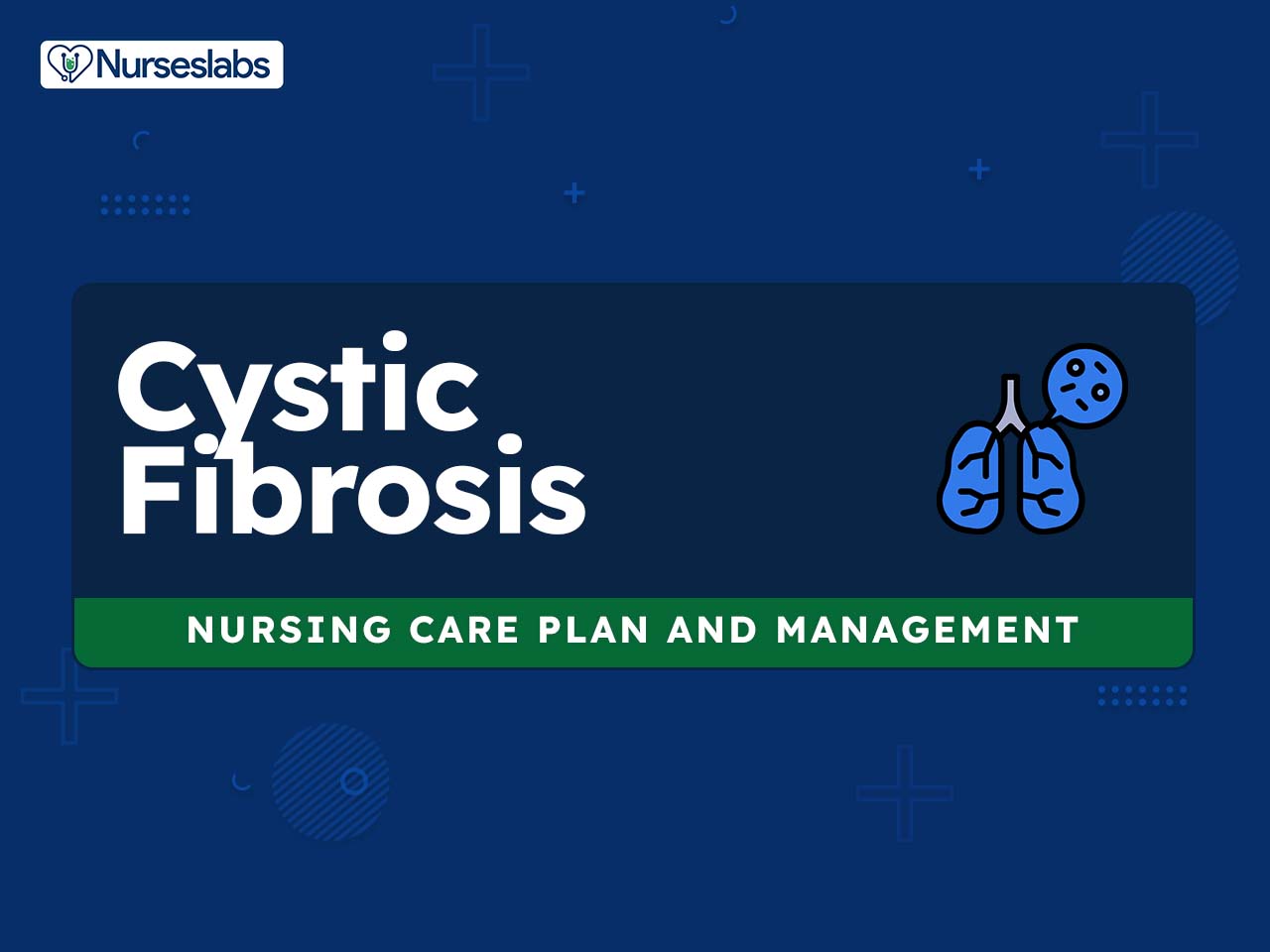
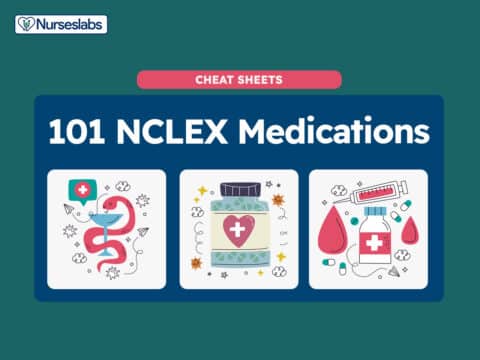

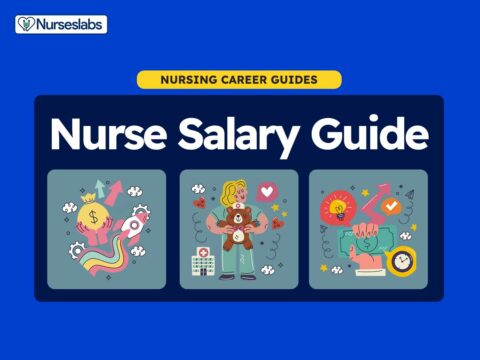






















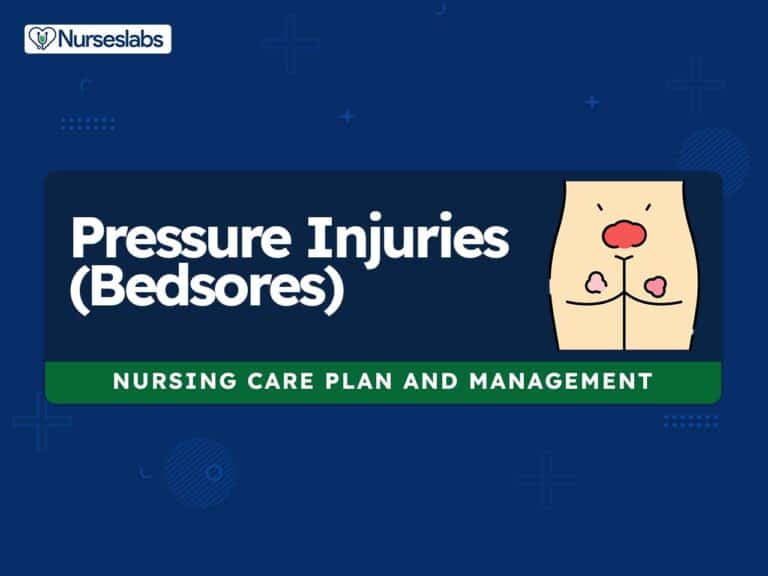

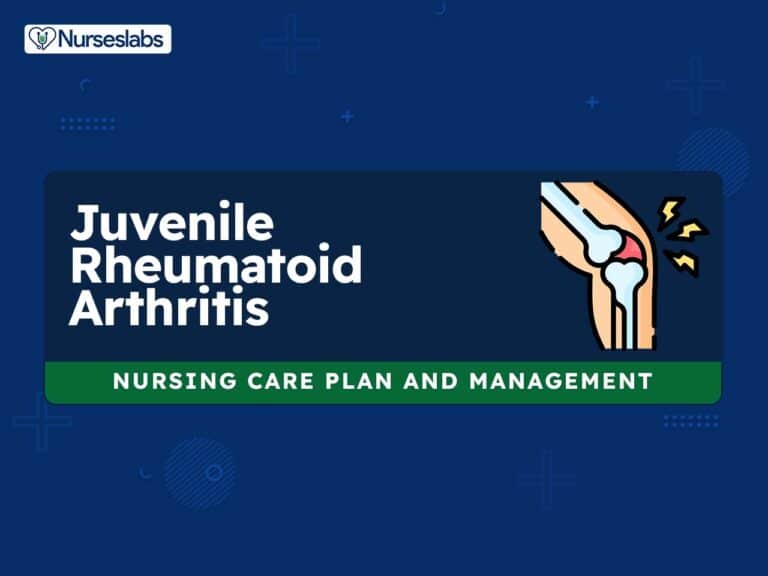

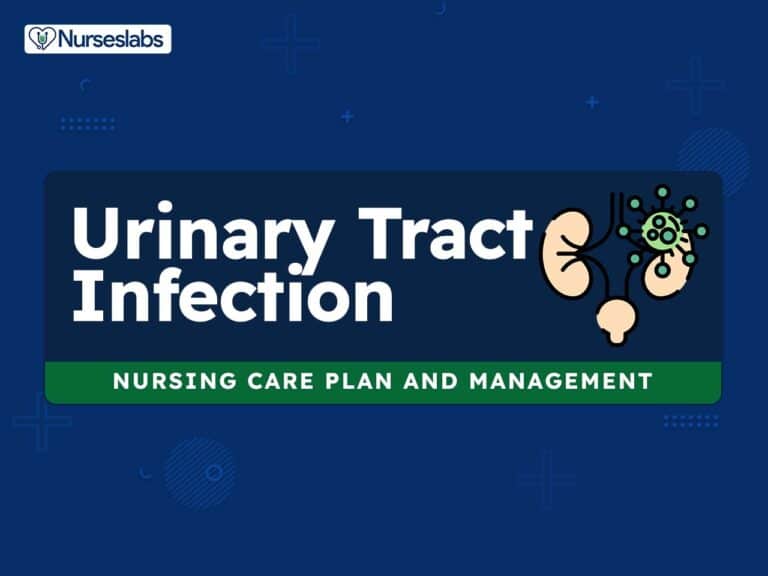
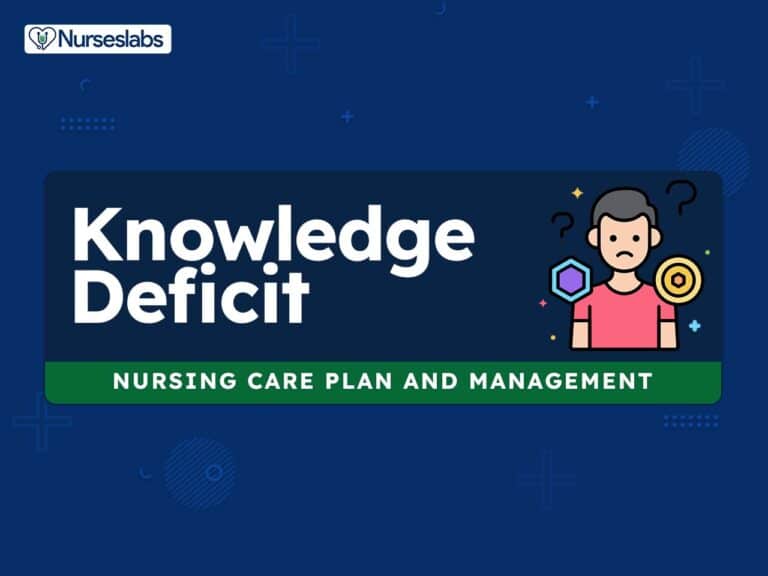
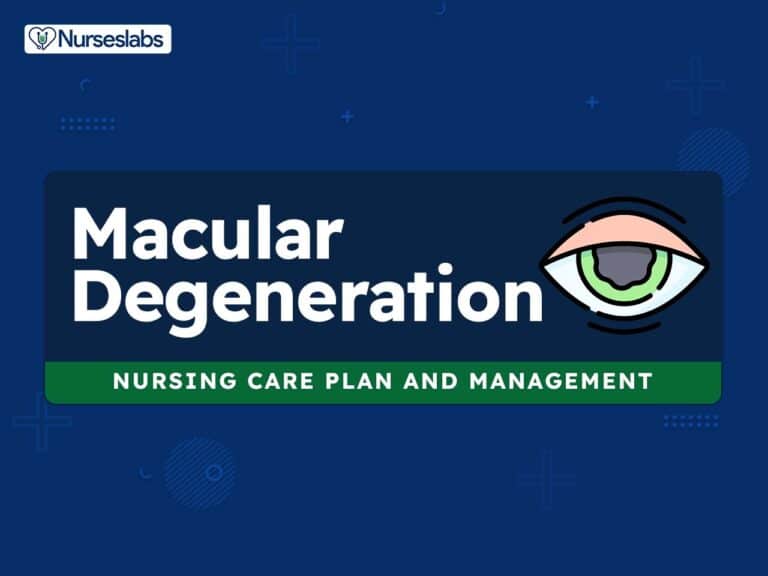
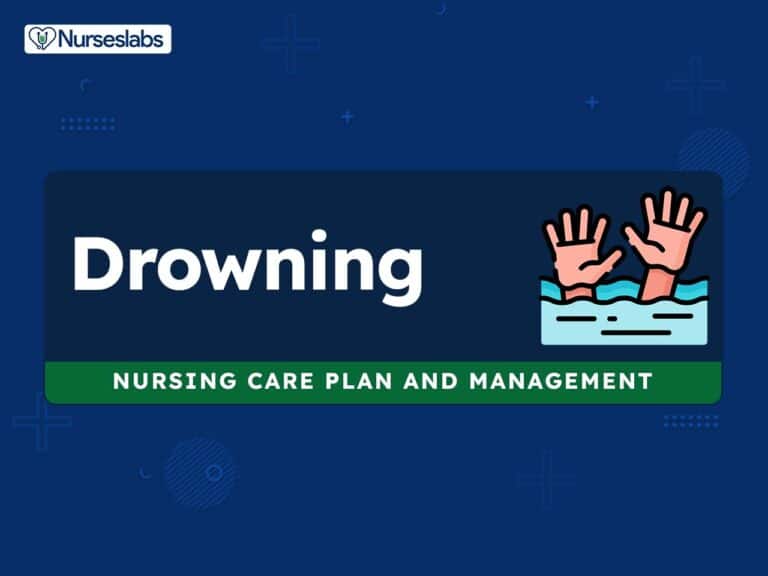
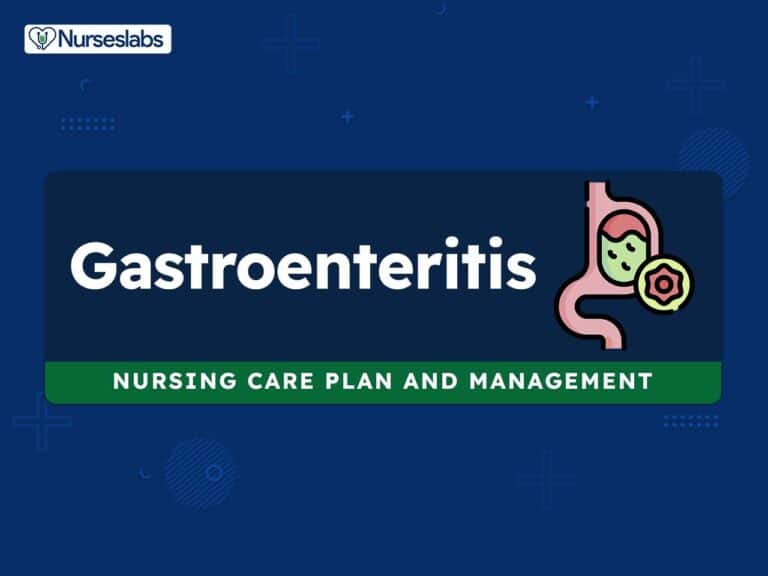
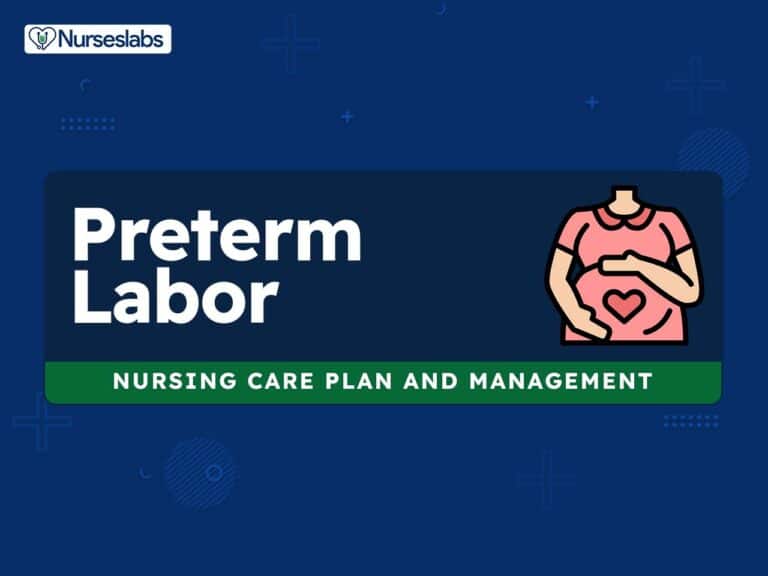

Leave a Comment